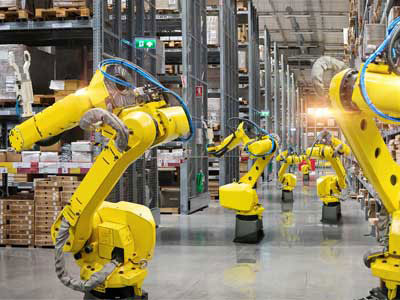Key Takeaway
Industrial robots enhance manufacturing processes by automating repetitive tasks, improving precision, and boosting efficiency. They control cutting paths accurately, ensuring the right cutting speed and stream stability. Robots maintain precise control over machine parameters like power, pressure, and flow rate. This results in consistent product quality, reduced waste, and lower production costs. By handling hazardous tasks, robots also improve workplace safety. Overall, industrial robots streamline operations, increase productivity, and maintain high standards in manufacturing.
Efficiency in Production
Production efficiency is crucial for optimizing resources and maximizing output. By streamlining processes and minimizing waste, businesses can enhance productivity and profitability. Implementing lean manufacturing principles, employing advanced automation technologies, and optimizing supply chain logistics are key strategies. Regular performance monitoring and continuous improvement initiatives further contribute to maintaining high-efficiency levels. This holistic approach not only reduces costs but also ensures consistent quality and timely delivery, crucial for meeting customer expectations in competitive markets.

Enhancing Workplace Safety
In any industrial environment, ensuring workplace safety is paramount. This is where robots emerge as invaluable allies. By assuming tasks that pose risks to human workers, such as handling toxic substances or operating heavy machinery, robots effectively minimize human exposure to potential hazards. This proactive approach not only prioritizes the well-being of workers but also significantly reduces the likelihood of workplace accidents, thereby fostering a secure and productive work environment.
Robots are particularly adept at handling tasks that involve risks such as chemical exposure or heavy lifting. These machines can operate with precision and reliability, executing repetitive tasks with consistency and reducing the margin for error. This capability not only enhances workplace safety but also improves operational efficiency, allowing human workers to focus on tasks that require human intuition and problem-solving skills.
Increasing Precision
Industrial robots are renowned for their unparalleled precision capabilities. Equipped with advanced sensors and precisely programmed algorithms, these machines excel in executing tasks with microscopic accuracy. This precision is particularly crucial in industries that demand exacting standards, such as electronic assembly and surgical procedures.
In fields like electronic manufacturing, robots play a pivotal role in ensuring the quality and reliability of products. Their ability to handle delicate components and perform intricate assembly tasks with consistent precision surpasses human capabilities. This not only enhances the overall product quality but also reduces defects and rework, leading to cost savings and improved customer satisfaction.
In surgical settings, robotic assistance has revolutionized procedures by offering surgeons enhanced precision and control. With robotic systems capable of performing complex maneuvers with sub-millimeter accuracy, procedures are not only safer but also result in faster recovery times for patients. This precision-driven approach has transformed surgical outcomes, making procedures less invasive and more predictable.
Reducing Costs
Industrial robots represent a significant leap in efficiency and cost-effectiveness for manufacturing operations. Despite their upfront investment, which may appear daunting at first glance, these robots offer substantial long-term savings that are hard to ignore. Unlike human workers, robots operate tirelessly without the need for breaks, overtime pay, or extensive training sessions. This alone optimizes labor costs dramatically, ensuring continuous operation and consistent output.
Moreover, their precision and reliability minimize material wastage, further contributing to cost reductions. Industrial robots excel in repetitive tasks, ensuring consistent quality and reducing errors that could lead to costly rework. This reliability not only saves on raw materials but also accelerates time-to-market, allowing companies to meet customer demands more promptly and efficiently.
Enabling Innovation
Beyond their economic benefits, industrial robots serve as catalysts for innovation across various industries. Their inherent flexibility and adaptability enable businesses to explore new realms of automation and design. For instance, collaborative robots (cobots) are designed to work alongside human operators, enhancing safety and efficiency in tasks that require both precision and human judgment.
This collaboration between humans and robots fosters a creative environment where new applications emerge. In sectors ranging from healthcare to agriculture, cobots are revolutionizing how tasks are performed, improving productivity while maintaining high standards of safety. This symbiotic relationship not only boosts productivity but also encourages technological advancements that drive industries forward.
Conclusion
Industrial robots offer numerous benefits, making them indispensable in modern manufacturing. They enhance productivity by automating repetitive tasks, ensuring consistent quality while reducing errors. Robots also improve workplace safety by handling hazardous materials and operations. Additionally, they optimize resource utilization and operational efficiency, leading to cost savings and competitive advantages. Overall, industrial robots empower businesses to achieve higher output, maintain quality standards, and innovate processes for sustained growth and profitability.
